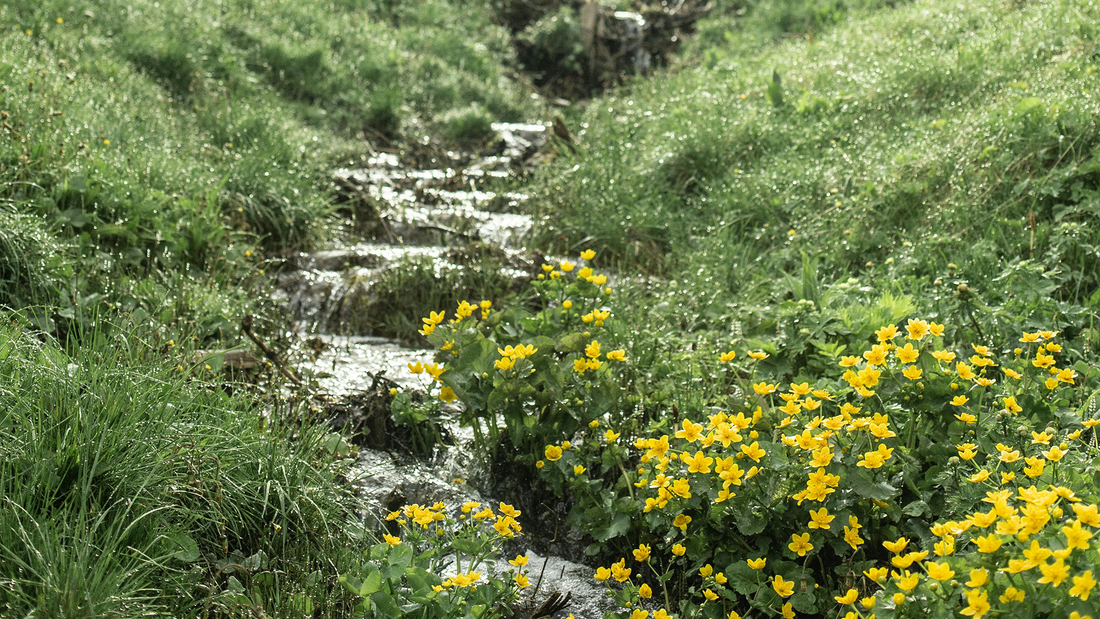
Common Signs of Lawn Drainage Issues
Share
Most lawns depend on water to stay lush and healthy. However, while insufficient water can cause grass to wilt and die, too much water can be equally harmful—especially if it has nowhere to drain. If your lawn often becomes waterlogged after rainfall, you might be dealing with drainage issues that require immediate attention. But how can you distinguish between normal sogginess and a serious drainage problem? This guide will help you identify the warning signs of poor lawn drainage and understand what causes it.
4 Signs Your Lawn Has Drainage Problems
If your lawn is struggling with drainage, there are several telltale signs to look for. Here’s what you should monitor if you suspect drainage issues:
1. Persistent Puddles
While minor puddles are common after heavy rainfall, they should disappear within a day or two. If water lingers for longer or pools even after light rain, it’s likely a sign of poor soil drainage. Standing water not only harms grass but also attracts pests like mosquitoes, making it a problem that demands prompt action.
2. Constantly Muddy Soil
Beyond puddles, consistent muddiness—even during dry spells—can indicate a drainage issue. If your lawn feels persistently soggy and unstable underfoot, it’s time to investigate further.
3. Frequent Lawn Diseases
Excess moisture creates the perfect environment for lawn diseases to thrive. Symptoms of lawn diseases include small discolored patches, white or brown spots, or large areas of dead grass appearing suddenly. While diseases alone don’t confirm drainage problems, they often coincide with poor water flow. If lawn disease recurs frequently, it’s worth considering inadequate drainage as a possible cause.
4. Plant Root Rot
Excessive moisture can lead to root rot, a condition where plant roots decay due to a lack of oxygen. Signs include yellowing grass, wilting plants, and stunted growth. Root rot can affect not only your turf but also shrubs, flowers, and trees. If your plants are struggling despite proper care, drainage issues might be to blame.
What Causes Poor Lawn Drainage?
Lawn drainage issues occur when water, whether from rainfall, snowmelt, or irrigation, cannot flow away efficiently. Several factors contribute to this problem:
1. Low-Lying Property
Water naturally accumulates in depressions, ditches, or other low-lying areas. If your lawn is situated in such a location, water may pool faster than it can evaporate or absorb into the soil, leading to persistent sogginess.
2. Soil Compaction
Compacted soil, often caused by heavy foot traffic, leaves little space for water to seep through. This dense soil slows drainage, resulting in a waterlogged lawn. Compaction is a common issue for lawns that are frequently used as walkways or play areas.
3. High Clay Content in Soil
Clay soil retains water due to its small, tightly packed particles. While clay is nutrient-rich, excessive amounts can hinder drainage and cause water to pool. If your lawn’s soil feels sticky and heavy when wet, it may have a high clay content.
How to Fix Poor Lawn Drainage
Addressing lawn drainage issues involves identifying the underlying cause and implementing targeted solutions. Here are some effective ways to improve drainage:
1. Lawn Aeration
Soil compaction can be alleviated with aeration, a process that involves using a specialized machine to perforate the soil and break up thatch. Aeration creates space for water to flow freely and air to reach plant roots, improving overall drainage. Combining aeration with overseeding for cool-season lawns can also promote thicker, healthier grass.
2. Install a Landscape Drainage System
For persistent or severe drainage issues, installing a yard drainage system may be the best solution. Options include French drains, dry wells, and sump pumps, each designed to redirect excess water. Although installation can be labor-intensive, these systems offer a long-term fix for waterlogged lawns.
3. Soil Amendments
If your soil’s clay content is too high, consider incorporating organic matter or sand to improve its structure. These amendments enhance soil permeability, allowing water to drain more effectively.
Creating a Healthier Lawn
Proper drainage is essential for maintaining a thriving lawn and outdoor space. By addressing drainage issues promptly, you can prevent further damage, reduce pest problems, and create an environment where your plants and grass can flourish. If you’re unsure how to tackle your lawn’s drainage challenges, consult with a professional lawn care service for tailored advice and solutions. A well-drained lawn isn’t just healthier—it’s also a more enjoyable place to spend time.
